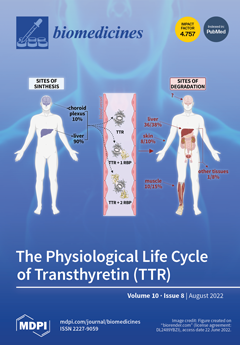Neurohormone activation plays an important role in Acute Heart Failure (AHF) pathophysiology. Serum osmolarity can affect this activation causing vasopressin excretion. The role of serum osmolarity and vasopressin concentration and its interaction remain still unexplored in AHF. The objective of our study was to evaluate the relationship of serum osmolarity with clinical parameters, vasopressin concentration, in-hospital course, and outcomes in AHF patients. The study group consisted of 338 AHF patients (male (76.3%), mean age of 68 ± 13 years) with serum osmolarity calculated by the equation: 1.86 × sodium [mmol/L] + (glucose [mg/dL]/18) + (urea [mg/dL]/2.8) + 9 and divided into osmolarity quartiles marked as: low: <287 mOsm/L, intermediate low: 287–294 mOsm/L, intermediate high: 295–304 mOsm/L, and high: >304 mOsm/L. There was an increasing age gradient in the groups and patients differed in the occurrence of comorbidities and baseline clinical and laboratory parameters. Importantly, analysis revealed that vasopressin presented a linear correlation with osmolarity (r = −0.221,
p = 0.003) and its concentration decreased with quartiles (61.6 [44.0–81.0] vs. 57.8 [50.0–77.3] vs. 52.7 [43.1–69.2] vs. 45.0 [30.7–60.7] pg/mL, respectively,
p = 0.034). This association across quartiles was observed among de novo AHF (63.6 [55.3–94.5] vs. 58.0 [50.7–78.6] vs. 52.0 [46.0–58.0] vs. 38.0 [27.0–57.0] pg/mL, respectively,
p = 0.022) and was not statistically significant in patients with acute decompensated heart failure (ADHF) (59.5 [37.4–80.0] vs. 52.0 [38.0–74.5] vs. 57.0 [38.0–79.0] vs. 50.0 [33.0–84.0] pg/mL, respectively,
p = 0.849). The worsening of renal function episodes were more frequent in quartiles with higher osmolarity (4 vs. 2 vs. 13 vs. 11%, respectively,
p = 0.018) and patients that belonged to the quartiles with low and high osmolarity were characterized more often by incidence of worsening heart failure (20 vs. 9 vs. 10 vs. 22%, respectively,
p = 0.032). There was also a U-shape distribution in relation to one-year mortality (31 vs. 19 vs. 23 vs. 37%, respectively,
p = 0.022). In conclusion, there was an association of serum osmolarity with clinical status and both in-hospital and out-of-hospital outcomes. Moreover, the linear dependence between vasopressin concentration and serum osmolarity in the AHF population was identified and was driven mainly by patients with de novo AHF which suggests different pathophysiological paths in ADHF and AHF de novo.
Full article






